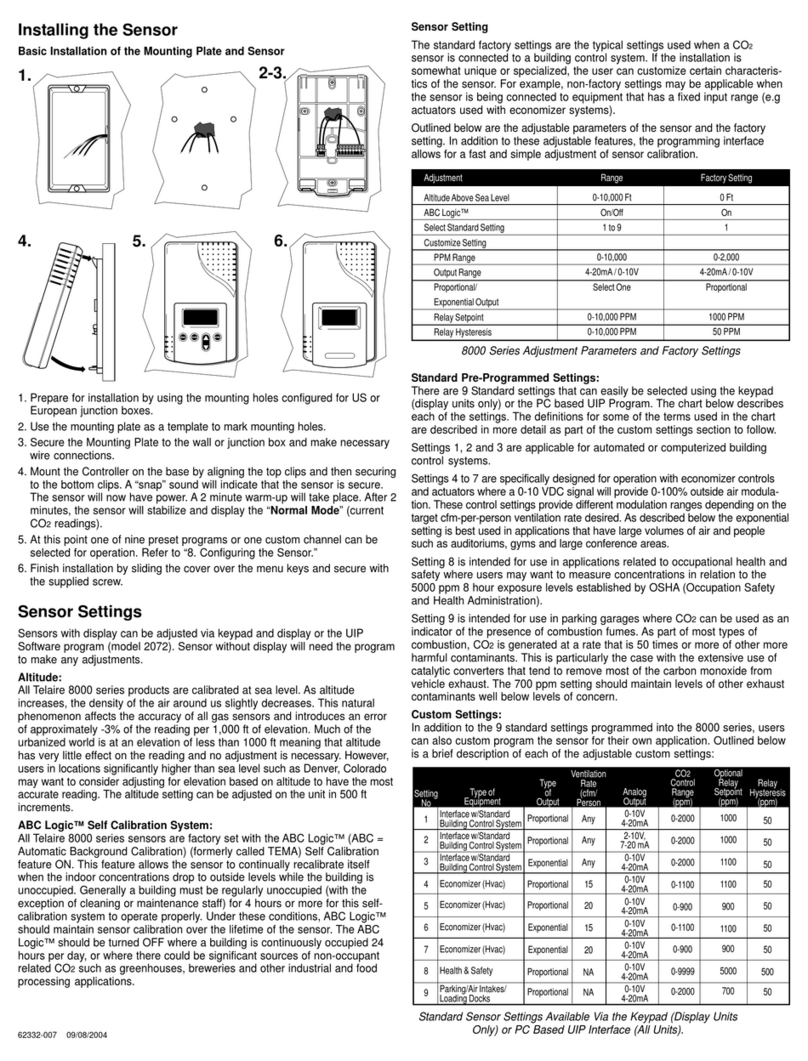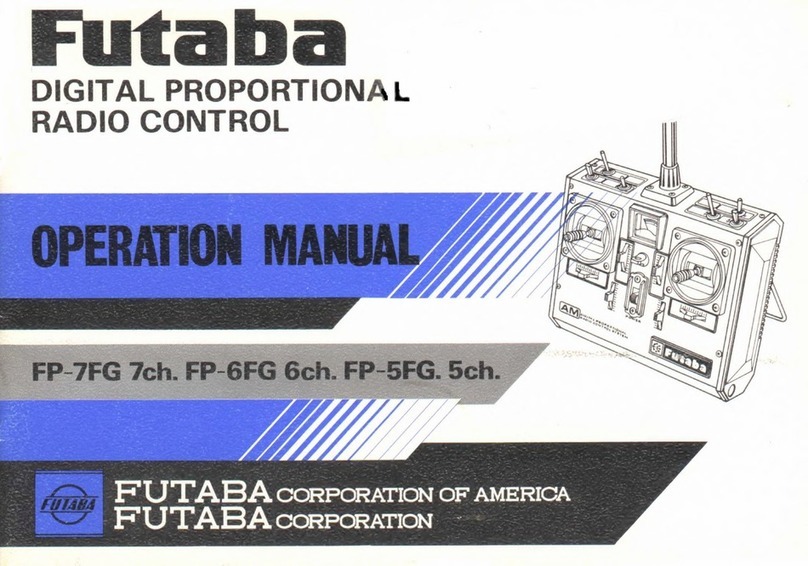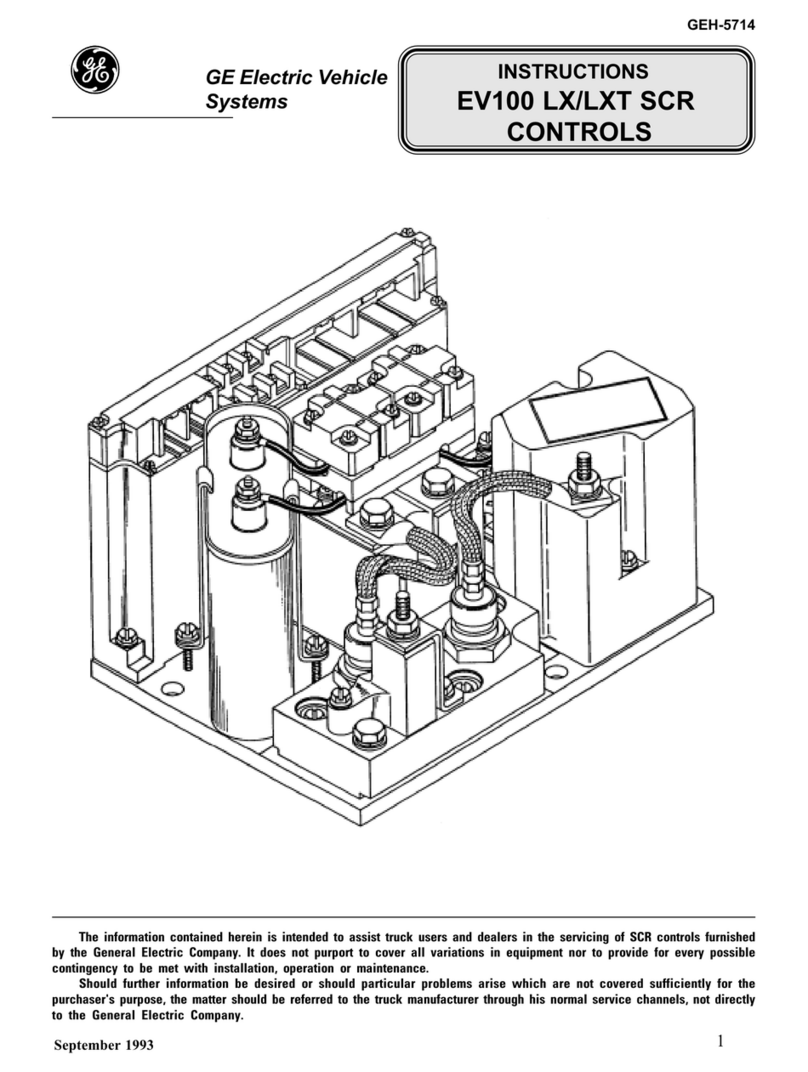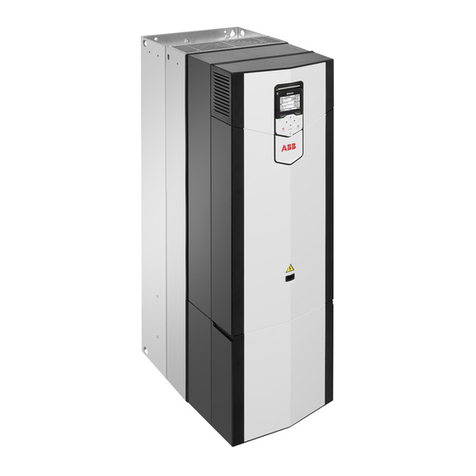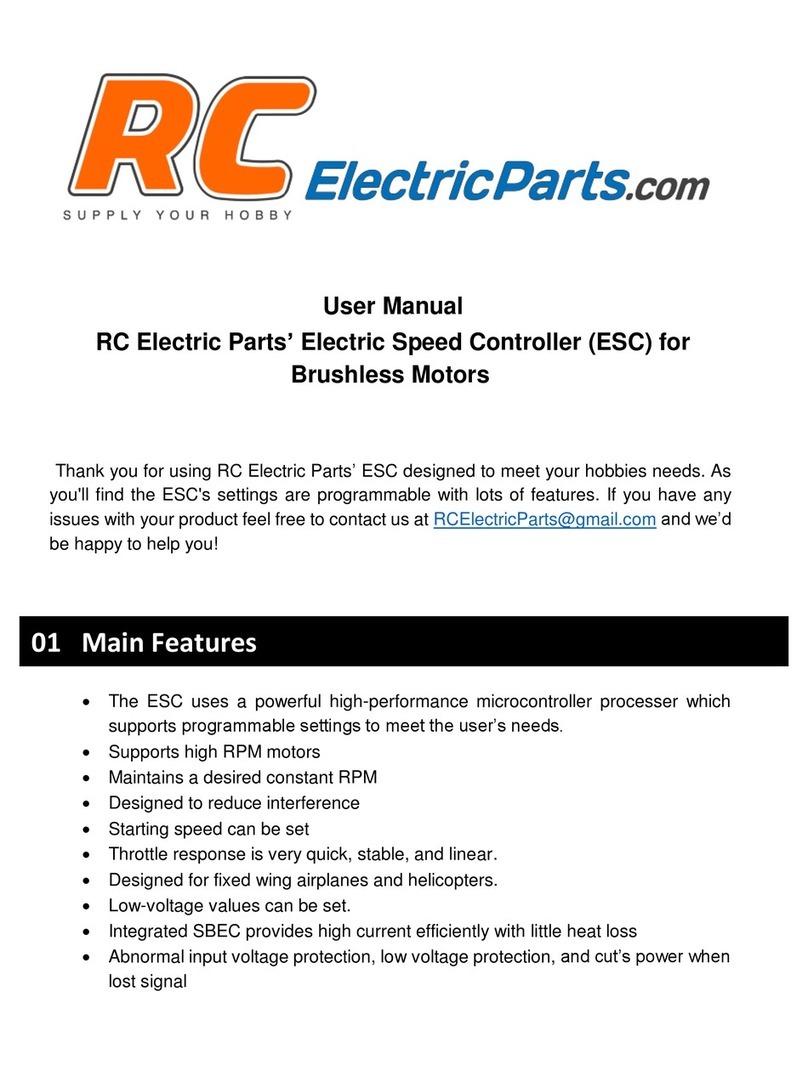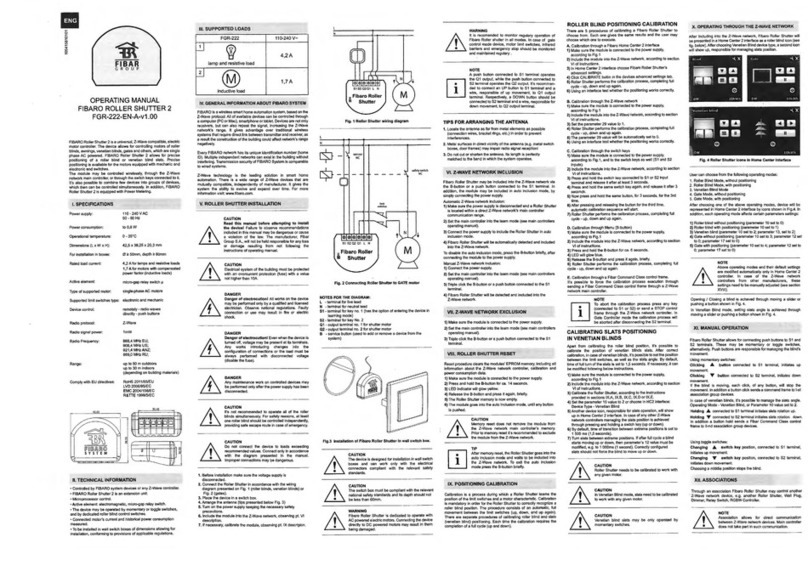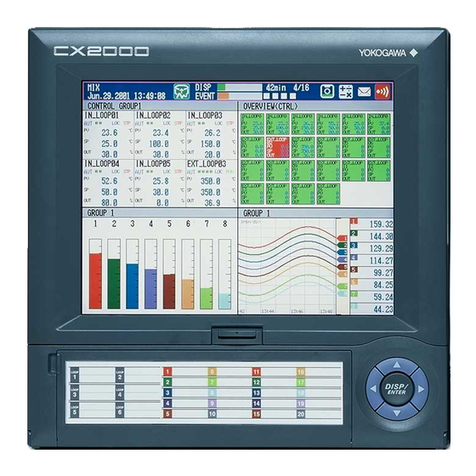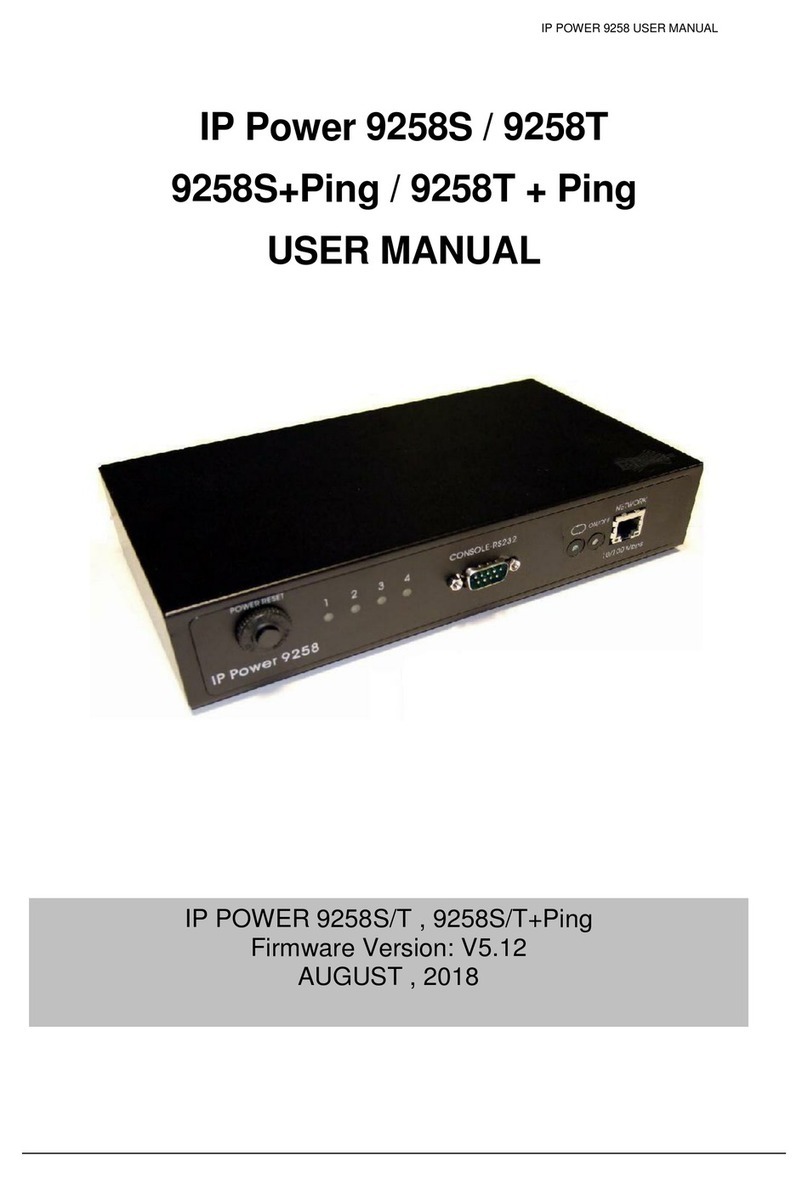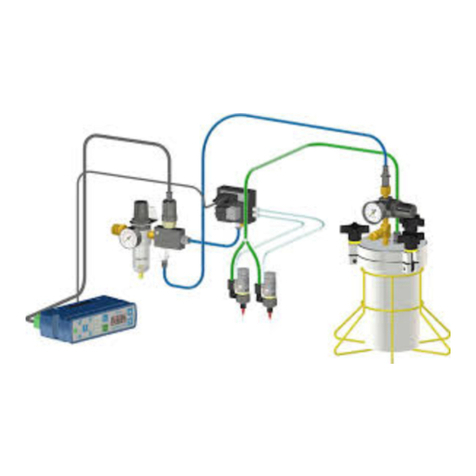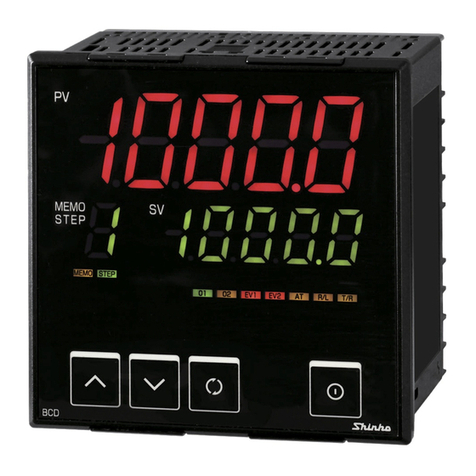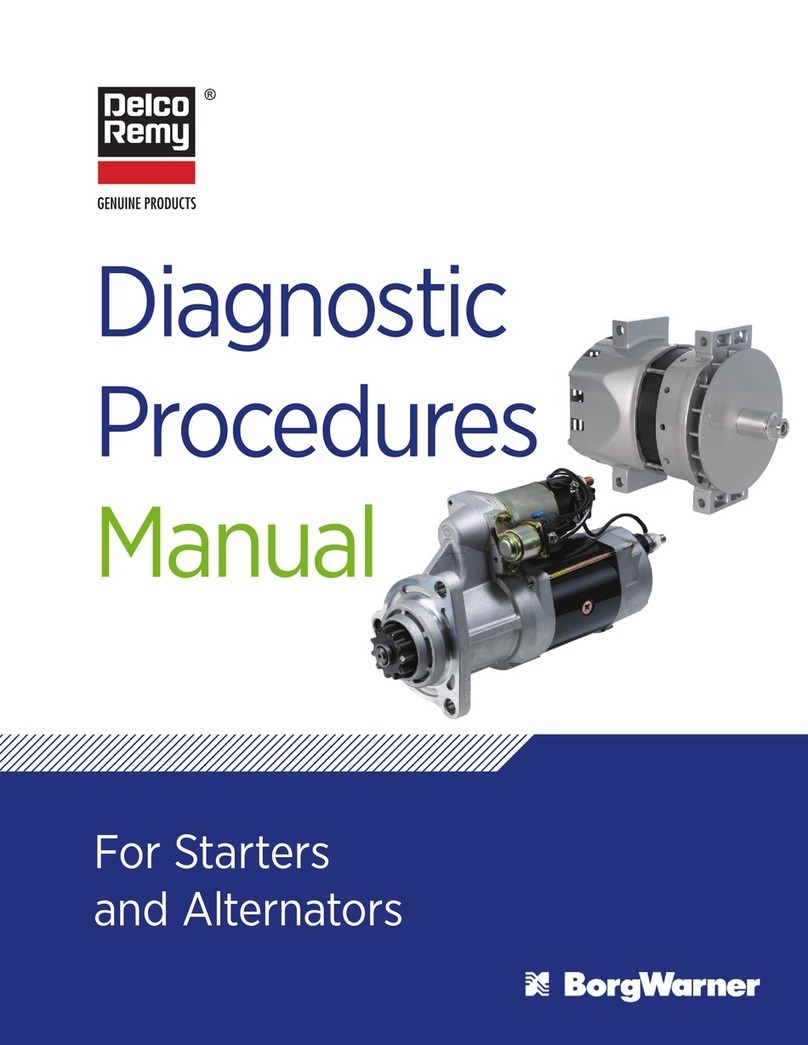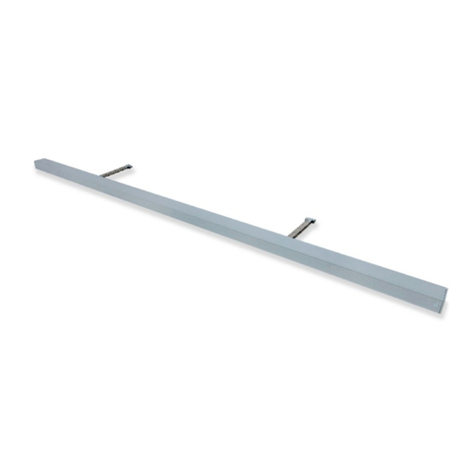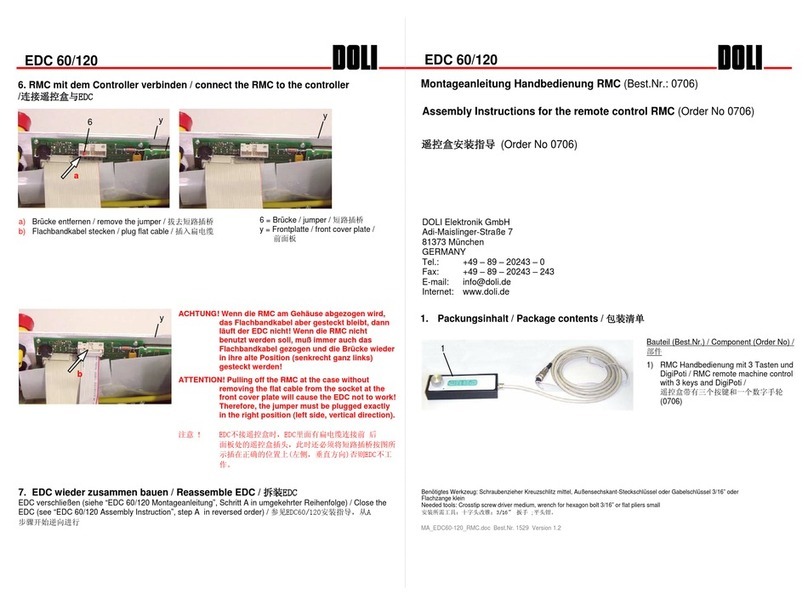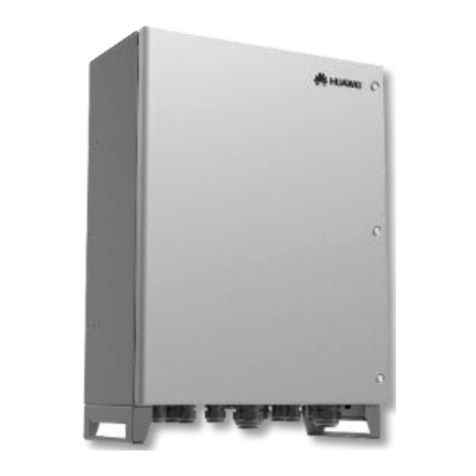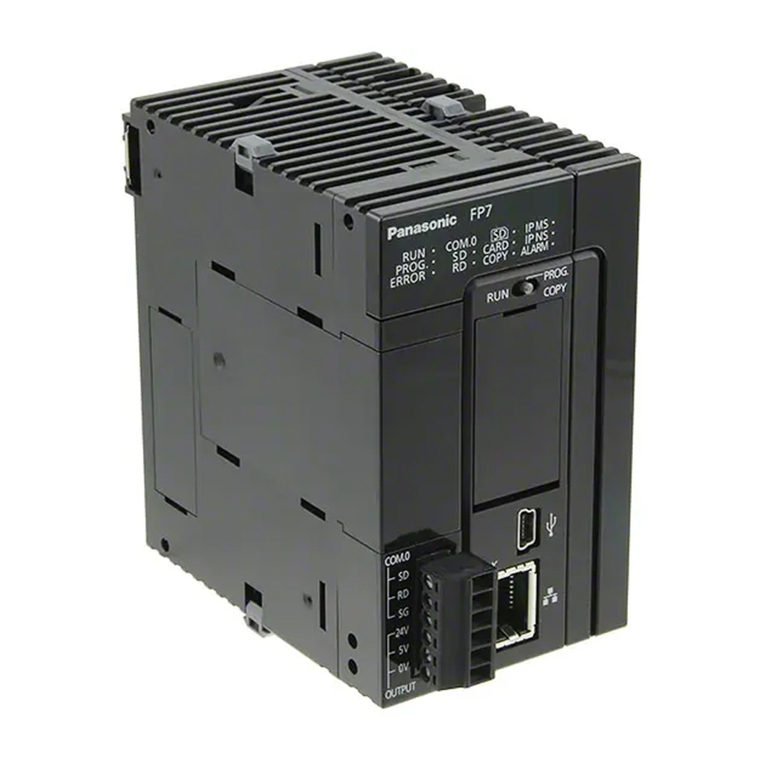Telaire Ventostat 8000 Series User manual

1
Ventostat®8000 Series
Commercial Product - Operation/Installation Manual
Carbon Dioxide (CO2) Sensors and Controllers
Covers the following Models: 8001 / 8001B / 8002 / 8002B / 8007 / 8008
Installing The Sensor
NOTICE!
Use of cellular telephones or radio transceivers within two (2) feet of the
sensor during calibration process could cause sensor interference, calibration
errors and affect sensor accuracy. Please refrain from using these devices
during sensor calibration.
Basic Installation of the Mounting Plate and Sensor
1. Prepare for installation by using the mounting holes configured for US or
European junction boxes.
2. Use the mounting plate as a template to mark mounting holes.
3. Secure the Mounting Plate to the wall or junction box and make necessary
wire connections.
4. Mount the Controller on the base by aligning the top clips and then
securing to the bottom clips. A“snap” sound will indicate that the sensor is
secure. The sensor will now have power. A 2 minute warm-up will take
place. After 2 minutes, the sensor will stabilize and display the “Normal
Mode” (current CO2readings).
5. At this point one of nine preset programs or one custom channel can be
selected for operation. Refer to “Configuring the Sensor.”
6. Finish installation by sliding the cover over the menu keys and secure with
the supplied screw.
2-3. 4.
Sensing Duct CO2Concentrations
Duct-Mounting the 8001B and 8002B
The 8001B and 8002B have the UL94-V5 rated black case and are specifically
designed for mounting inside the return air ductwork. When mounting these
products inside the ductwork, seal the hole around the wires and leave the duct
insulation in place to prevent condensation which may damage the sensor.
Pitot Tube Installation for the 8007 and 8008
Install the mounting bracket then install the pitot tube assembly as follows:
Note: The length of the Tygon®
tubing is three feet. In order to
maintain optimum accuracy, the
tubing should not be lengthened.
If the sensor is mounted closer
than three feet, the excess
tubing should be shortened to
avoid interference with mechani-
cal or moving devices.
1. To mount the pitot tube, drill one 7/8” hole through the duct.
2. Insert the pitot tube and mark the two remaining holes for the
mounting screws.
3. Punch or drill the two marked holes.
4. Note the direction of airflow in the duct.
5. Note the marking on the pitot tube flange and insert
so that it is properly aligned with the airflow.
6. To ensure an air tight seal, make sure the mounting
surface of the duct is clear of dirt or obstructions. Then, attach the pitot tube
to the duct with sheet metal screws or rivets.
7. On top of the sensor, unscrew the protective caps from the tube connectors.
8. Check the length of the tubing before attaching to the sensor. The tubing
should connect without stretching or pulling. If the length is long enough to
create a loop or bind in the tubing, it should be shortened.
9. To shorten the tubing, remove the connectors that attach to the sensor and
cut the tubing to length.
10.Replace the tubing connectors by using a twisting or screwing motion.
Verify the connection is secure.
Note: If the tubing length has been shortened, be sure the in-line filter is
replaced on the pitot tube connector marked with an “H”.
11. Complete the installation by screwing the tube connectors to the input
ports on the sensor. The tubing connectors can be attached to either input
port. It will not affect the performance of the sensor.
H
FLOW
L
Filter must be
attached to the
“H” side of the
pitot tube
Stripwireonly1/4"
Donotallowloose
strandstocontact
adjacentwires. 1/4"
Usedrawing
asaGuide
Warning:
PinDesignations
1.AC+/DC+
2.AC-/GND
18-36VACrmsor
18-42VDC
100mAPeak,
70mAavg@24 VDC
PowerRequirements
PinDesignations
1.NotUsed
2.NotUsed
3.RelayNormOpen
4.RelayCommon
5.RelayNormClosed
6.4-20mAOutput
7.SignalGround
8.0-10VOutput
®
clear
mode
enter
5- 6.
Accessory Enclosures
Model 1508 Duct Mount Enclosure (Aspiration Box)
Any 8000 product can be installed inside a Model 1508 Duct Mount Enclosure.
Model 1551 Outside Air Measurement Enclosure
This NEMA-3R weatherproof for measuring outside air CO2concentrations.
Includes heat stabilizers.
Model 1505 Harsh Environment Enclosure
For extreme environments where the sensor might be subjected to condensa-
tion or water spray such as those found in greenhouses or breweries- NEMA-
3R rated.
Typical Wiring Diagrams
AC Power 3-Wire System Isolated AC Power 4-Wire System
62659-00609/08/2004
6860 Cortona Drive, Suite B - Goleta, California, 93117
P- 805-685-4000 F- 805-685-0015
Use Either Output
0-10Vout
4-20mAout
L1
L2
18-30 VAC RMS
1
2
Input
12
3
4
5
6
78
Common
Ventostat Mounting Bracket
0-10Vout
4-20mAout
L1
L2
18-30 VAC RMS
Signal Ground
1
2
Input
12
3
4
5
6
78
Common
Ventostat Mounting Bracket
4
Warranty
6860 Cortona Drive, Suite B, Goleta, CA93117 P- 805-685-4000 F- 805-685-0015 www.telaire.com
Telaire seeks to present reliable information concerning the composition, properties and use of its products, however; (1) All advice concerning selection and use of any product is
provided at no charge and with no warranty. (2) No warranty is made hereby. Products described herein are warranted to conform to Telaire specifications only at the time of sale. All
sales are subject to Telaire standard terms and conditions, which are reproduced on the reverse side of each invoice. All warranties of merchantability and fitness of purpose are
disclaimed and remedy for any breach of warranty is limited to replacement of the defective product. (3) Telaire assumes no responsibility for any patent liability arising from the use
of any product in a process, manner or formula not designed by Telaire. ©Copyright 1999-2004
62659-00609/08/2004
Troubleshooting
Symptom
•LCD Display is blank after the 2 minute warm-up period (8002 and 8008
models).
Remedy
•Remove the sensor from the wiring plate and check the voltage on pins 1
and 2 of the 2-pin terminal block. The voltage should be: 18-30 VAC RMS or
18-42 VDC.
•Ensure that the sensor pins that connect to the 2-pin terminal block are not
broken, bent, or damaged.
•If the LCD display is still blank after replacing the sensor on the mounting
plate, call Telaire or your distributor/dealer for a return authorization number.
Symptom
•Green light is not illuminated (8001 and 8008 models) after the two minute
warm-up period.
Remedy
•Remove the sensor from the wiring plate and check the voltage on pins 1
and 2 of the 2-pin terminal block. The voltage should be: 18-30 VAC RMS or
18-42 VDC.
•Ensure that the two pins on the sensor that connect to the 2-pin terminal
block are not broken, bent, or damaged.
•If the green light is still not illuminated after replacing the sensor on the
mounting plate, try verifying the sensor operation using the UIP8000
computer interface or checking the output signal on the building automation
system.
•If there is not an output signal, call Telaire or your distributor/dealer for a
return authorization number.
Symptom
•Suspect the sensor is out of calibration.
Remedy
•Compare the sensor reading to a Telaire 7001 hand-held CO2monitor, or
•Take another sensor from the building and replace the suspect sensor to see
if the readings are similar, or
•Connect the sensor outdoors (if possible). The readings should be between
350 and 450 ppm, or
•Connect the sensor to nitrogen gas from a Model 2075 calibration kit. The
reading should be close to zero.
•If the sensor proves to be out of calibration, calibrate the sensor according to
the instructions included in your calibration kit or return the sensor to Telaire
for factory calibration (call for a return authorization number).
Symptom
•Relay does not actuate at the proper setpoint.
Remedy
•Using the LCD menu or the UIP8000 computer interface, verify that the relay
setpoint is correct.
•Return the sensor to normal operating mode, and breathe into the sensor to
raise the ppm value above the relay setpoint.
•If the relay does not actuate at the proper setpoint, call Telaire or your
distributor/dealer for a Return Authorization (RA) number.
Specifications
Method
Single Beam Absorption Infrared™
Diffusion sample method (8001, 8001B, 8002, 8002B)
Flow-Through sample method (70-120 ml/min) (8007, 8008)
Performance
Measurement Range
0-2000 ppm factory default
Adjustable to 10,000 ppm with UIP software kit
Accuracy
±100 ppm or 7% whichever is greater
Elevation (Pressure) Correction
Add 0.13% of reading per mm Hg decrease from
760 mm Hg (On-board correction, user set with UIP software)
Response Time 0-90%
<1 minute
Warm-Up Time @ 25oC
<2 minutes
Operating Conditions
15 – 32°C (60-90°F)
0 – 95% RH, non-condensing
Storage Temperature
-40 – 70°C
Agency Certification
FCC Part 15 Class B, CE, California Energy Commission
Input/Output
Power
18-30 VAC RMS, 50/60 Hz – half-wave rectified
18-42 VDC polarity protected
1.75 VA maximum average power
2.75 VA peak power
Analog Output (Simultaneous)
0-10 VDC (100 Ohms output impedance)
4-20 mA (RLmax = 500 Ohms)
Relay Output
Normally Open and Normally Closed (wire either way), gold bifurcated, 2A
max. @ 24VAC. Adjustable setpoint, factory set at 1000 ppm, 50 ppm
hysteresis
Wiring
18-28 AWG stranded copper wire only. 2 wires each for power, analog output,
relay
Digital I/O
RS-232 interface for use with optional PC software and cable in UIP kit 2072
Warranty/Other
Warranty
18 months parts and labor
This product is covered by one or more of the following patents:
5,650,624 / 5,721,430 / 5,444,249 / 5,747,808 / 5,834,777 / 5,163,332 /
5,340,986 / 5,502,308 / 6,344,798 / 6,023,069 / 5,370,114 / 5,601,079 /
5,691,704 / 5,767,776 / 5,966,077 / 6,107,925 / 5,798,700 / 5,945,924 /
5,592,147 / 6,255,653 / 6,250,133 / 6,285,290

2
24VAC+
24VAC
GND
AI-3
AI-CM
TB1
1
2
3
4
5
6
7
8
1
2
Input
12
3
4
5
6
78
Common
Ventostat Mounting Bracket
Configuring the Sensor
Adjustable Sensor Settings
The Telaire 8000 series includes features which are user adjustable. These
adjustments can be made using the keypad on display units or by the PC
based UIP program that communicates to the sensor via a custom RS232
interface cable.
Factory Settings
The default settings are the typical settings used by a building control system.
If the installation requires changes to the sensor, the user can customize
certain characteristics of the sensor. For example, non-factory settings may be
applicable when the sensor is being connected to equipment that has a fixed
input range (e.g actuators used with economizer systems).
Outlined below are the adjustable parameters of the sensor and the factory
setting. In addition to these adjustable features, the programming interface
allows for a fast and simple adjustment of sensor calibration.
Sensor Programming Features
All Telaire 8000 series products are calibrated at sea level. As altitude
increases, the accuracy of this sensor, as all gas sensors, introduces an error
of approximately -3% of the reading per 1,000 ft of elevation. Users that are in
elevations significantly higher than sea level such as Denver, Colorado should
consider adjusting the altitude to have the most accurate reading. The altitude
setting can be adjusted on the unit in 500 ft increments.
ABC Logic™ Self Calibration System
All Telaire 8000 series sensors are factory set with the ABC Logic™ (Automatic
Background Calibration) self calibration feature ON. This feature allows the
sensor to continually recalibrate itself when the indoor concentrations drop to
outside levels while the building is unoccupied. Generally a building must be
regularly unoccupied for 4 hours or more for this self-calibration system to
operate properly. Under these conditions, ABC Logic™ should maintain sensor
calibration over the lifetime of the sensor. The ABC Logic™ should be turned
OFF where a building is continuously occupied 24 hours per day, or where
there could be significant sources of non-occupant related CO2 such as
greenhouses, breweries and other industrial and food processing applications.
Pre-Programmed Settings
In addition to the factory setting for the 8000 series sensors, there are 9
standard settings that can easily be selected using the keypad (display units
only) or the PC based UIP Program. The chart below describes each of the
settings. The definitions for some of the terms used in the chart are described
in more detail as part of the custom settings section to follow.
Settings 1, 2 and 3 are applicable for automated or computerized building
control systems.
Settings 4 to 7 are specifically designed for operation with economizer controls
and actuators where a 0-10 VDC signal will provide 0-100% outside air modula-
tion. These control settings provide different modulation ranges depending on
the target cfm-per-person ventilation rate desired. As described below the
exponential setting is best used in applications that have large volumes of air
and people such as auditoriums, gyms and large conference areas.
Setting 8 is for use in occupational health and safety applications where users
want to measure concentrations in relation to the 5000 ppm 8 hour exposure
levels established by OSHA (Occupation Safety and Health Administration).
Setting 9 is intended for use in parking garages where CO2can be used as an
indicator of the presence of combustion fumes. As part of most types of
combustion, CO2is generated at a rate that is 50 times or more of other more
harmful contaminants. This is particularly the case with the extensive use of
catalytic converters that tend to remove most of the carbon monoxide from
vehicle exhaust. The 700 ppm setting should maintain levels of other exhaust
contaminants well below levels of concern.
Using the Relay Contacts
Lennox L-Series w/ Johnson Controls
Metasys UNT or Facilitator FA-UNT
Lennox L-Series
Set minimum postion potentiometer to twice the design load. For example, if the space is
designed for 30 people at 15 cfm/person, adjust the minimum position potentiometer at the
economizer logic to 900 cfm. This will allow the economizer to introduce 450 cfm (1000 ppm
CO2 level) at the design load. The CO2 sensor should use “STDSET#1.”
NOTE: 24V- Do not use HVAC unit transformer. Provide 24V by non-grounding transformer.
Honeywell M7415 Damper Actuator with W7459 Logic Module
1 Not Used
2 Not Used
3 Relay Norm Open
4 Relay Common
5 Relay Norm Closed
6 4-20mA Output
7 Signal Ground
8 0-10V Output
1 AC+ / C+
2 AC- / GND
8-Pin and 2-Pin Terminal Block Pin
Designations on the Ventostat
Mounting Bracket
L1
L2
18-30 VAC RMS
NC NO
COM
Ventostat®
Mounting Bracket
1
2
Input
12
3
4
5
6
78
Common
Typical Wiring Diagrams (Continued)
Johnson Controls M100E Economizer Actuator with R81EAA-2 Interface Board
(P1)
(P)
Rear View
Front View PP1
Honeywell Damper
Actuator M7415 and
W7459 Logic Module
(-)
(+)
Honeywell
Q769C 0-10 Vdc
Adaptor
Black
Optional High
and/or Low
Temp Swtich
White
L1
L2
18-30 VAC RMS
1
2
Input
12
3
4
5
6
78
Common
Ventostat Mounting Bracket
M100E
8T2
T1
L1
L2
S2
S1
B
R
T
A91 Mixed Air
Thermistor
9
10
Open
Close
Y45AA-9 Remote Minimum
Position Potentiometer
(1,000-10,000 ohm)
L1
L2
Common
1
2
Input
12
3
4
5
6
78
Common
Ventostat Mounting Bracket
NC NO
COM
Ventostat Mounting Bracket
1
2
Input
12
3
4
5
6
78
Common
6
7
8
910 11 12 13 14
16
24VAC+
24VAC
GND
24VAC In
Common
+10VDC In
15
TB1
8000 Series Adjustment Parameters and Factory Settings
Range
0-10,000Ft
On/Off
1to 9
0-10,000
4-20mA/0-10V
SelectOne
0-10,000PPM
0-10,000PPM
FactorySetting
0Ft
On
1
0-2,000
4-20mA/0-10V
Proportional
1000PPM
50PPM
Adjustment
AltitudeAboveSea Level
ABCLogic™
SelectStandard Setting
CustomizeSetting
PPMRange
OutputRange
Proportional/
ExponentialOutput
RelaySetpoint
RelayHysteresis
3
Custom Settings
In addition to the 9 standard settings programmed into the 8000 series, users
can also custom program the sensor for their own application. Outlined below
is a brief description of each of the adjustable custom settings:
•Control Range: The range that will correspond to the analog signal output
range. The range consists of a low level and a high level in ppm. Setting this
range does not limit the actual measurement or display range.
•Analog Output Range: Can be expressed in V or mA. This range will
correspond to the range of CO2concentrations established in the measure-
ment range. A V and mA output is selected based on the wiring terminals. It
is possible to simultaneously connect to both the V and mA outputs.
•Proportional or Exponential Control: Proportional (linear) control
increases the signal output in proportion to the increase in CO2concentra-
tions for the measurement range and analog output range selected.
Exponential control provides an output function that is exponential over the
selected range of the sensor. The effect of the exponential output is to
initially introduce more ventilation to the space as concentrations are at the
lower level of the control range. The exponential output is particularly useful
for areas of potential high occupancy and high air volume where significant
time may be required for CO2levels to build up. Potential applications
include arenas, gyms, auditoriums and large conference areas. Examples of
both types of outputs are provided below.
Standard Settings Adjustable via keypad or UIP Interface
Typeof
Equipment
Interfacew/Standard
BuildingControl System
Interfacew/Standard
BuildingControl System
Interfacew/Standard
BuildingControl System
Economizer(Hvac)
Economizer(Hvac)
Economizer(Hvac)
Economizer(Hvac)
Health& Safety
Parking/AirIntakes/
LoadingDocks
Type
of
Output
Proportional
Proportional
Exponential
Proportional
Proportional
Exponential
Exponential
Proportional
Proportional
Ventilation
Rate
(cfm/
Person
Any
Any
Any
15
20
15
20
NA
NA
Analog
Output
0-10V
4-20mA
2-10V,
7-20mA
0-10V
4-20mA
0-10V
4-20mA
0-10V
4-20mA
0-10V
4-20mA
0-10V
4-20mA
0-10V
4-20mA
0-10V
4-20mA
CO2
Control
Range
(ppm)
0-2000
0-2000
0-2000
0-1100
0-900
0-1100
0-900
0-9999
0-2000
Optional
Relay
Setpoint
(ppm)
1000
1000
1100
1100
900
1100
900
5000
700
Relay
Hysteresis
(ppm)
50
50
50
50
50
50
50
500
50
Setting
No
1
2
3
4
5
6
7
8
9
•Relay Set Point: Establishes the level at which the on-board relay will
activate. The relay is a double pole single throw (DPST) relay that allows the
user to operate the relay normally open or normally closed based on the
selection of wiring terminals connected on the sub-base.
••
••
•Relay Hysteresis (Deadband): Is the point at which the relay will de
activate. It is entered as a ppm value below the setpoint. Asensor with a
relay setting of 1000 and a hysteresis of 50 would activate at 1000 ppm and
deactivate at 950 ppm.
Increasing Ventilation
Design Ventilation Rate
Exponential Control Approach
Proportional CO2 Control Approach
Minimum Position = Vs
Maximum Position = Vs+Vp
Base Ventilation For Sources
Ventilation
Based On
CO DCV
2
Relay Control
Approach
Deadband
Setting Setpoint
500 1000
Inside/Outside CO Differential
2
Equilibrium CO Concentration
For Target Ventilation Rate
(15 CFM = 700 PPM)
2
Adjusting Sensor Using Display
Button Functions:
[CLEAR] - Resets Menu / Returns to Normal Mode
[MODE] - Toggles to Next Menu Item
[ENTER] - Press to Lock Menu
[UP/DOWN] - Increase/Decrease Selection Value
Altitude Correction and ABC LogicTM (On/Off):
1. After 2 minute warm-up period, press CLEAR + MODE. Hold at least 5
seconds until the sensor enters the edit mode.
2. The first menu is Altitude correction. Use the UP/DOWN Rocker Button to
adjust to the proper altitude in 500 ft. increments.
3. Press ENTER to lock in value then press MODE to proceed to ABC Logic.
4. Use the UP/DOWN Button to switch to ON or OFF.
5. Press ENTER to lock value then press MODE to proceed to Normal Mode.
It is recommended that ABC Logic is left ON for the best sensor operation.
Selecting a Pre-Programmed Setting:
The pre-programmed settings shown in the “Standard Settings” Table are
factory set and cannot be changed. These settings can be selected from the
Standard Settings (STDSET) menu. The Altitude and ABC Logic™ features
can be changed without entering the Standard Settings (STDSET) menu.
1. After 2 minute warm-up period, press CLEAR + MODE and hold (at least 5
seconds) until the sensor enters the edit mode.
2. Press MODE 2 times. You will enter the STDSET menu.
3. Use the UP/DOWN button to select the desired pre-programmed number.
Refer to “8. Configuring the Sensor” for the appropriate setting number.
4. Press ENTER to lock selection, press MODE to return to Normal Mode.
For Non-Standard (Custom) Settings:
The non-standard (custom) settings can be changed at any time after the
sensor is powered up. The 7 variables are: PPM Range, Scale (proportional or
exponential), Output (V or mA), Output Range V, Output Range mA, Relay
Setpoint, and Relay Hysterisis. The Altitude and ABC Logic™ features can be
changed without entering into the Non-Standard (NONSTD) menu.
1. After 2 minute warm-up period, press CLEAR + MODE and hold (at least 5
seconds) until the sensor enters the edit mode.
2. Press MODE 2 times. You will enter the STDSET menu.
3. Use the UP/DOWN Rocker Button to toggle to the NONSTD menu.
4. Press MODE to move through the variables. Use the UP/DOWN button to
toggle to desired setting.
5. Press ENTER to lock in the selection, press MODE for the next variable.
Adjusting the Sensor with the UIP Program
The UIP 8000 (Model 2072) is a Windows based interface program designed
to work with Ventostat ventilation controllers. It allows quick, easy adjustments
to the output, elevation, relay setpoint, hysteresis and can be used with
calibration for calibration.
This program is ideal for units without display but can also be used with
display. The UIP accessory package comes with the program and cables for
connecting the sensor to a laptop computer equiped with a serial communica-
tions port.
Below is a screen capture of the easy-to-use program.
Screen Shot of Main UIP Screen
This manual suits for next models
6
Other Telaire Controllers manuals
